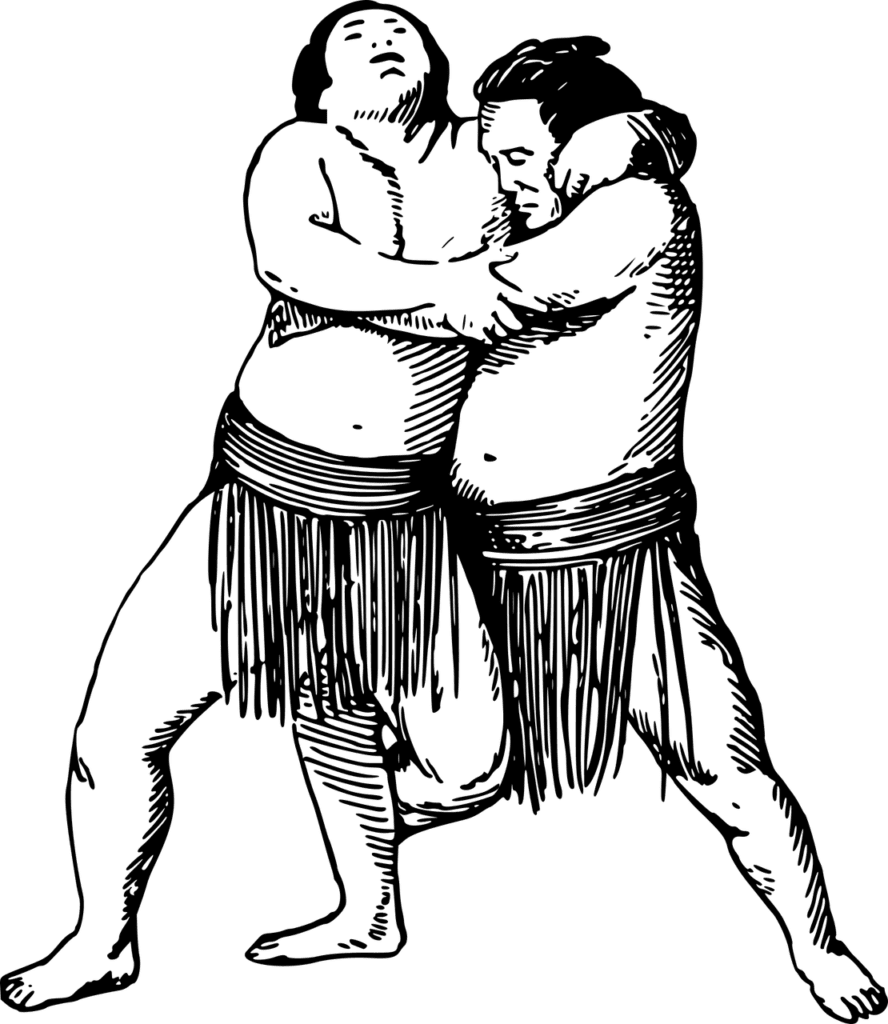Welcome to “Developing Effective Counter Wrestling,” where you’ll uncover strategies to sharpen your skills on the mat and outsmart your opponents. In this article, you’ll learn practical techniques and insights to defend against aggressive wrestling maneuvers, turning the tables in your favor. Whether you’re a beginner looking to build a solid foundation or an experienced wrestler aiming to refine your tactics, you’ll find valuable advice to enhance your defensive prowess and boost your confidence during matches. Dive in and get ready to elevate your wrestling game to the next level! Have you ever found yourself in a wrestling match, feeling outmaneuvered and overpowered by your opponent? Wrestling is not just a test of strength but also a game of strategy and quick thinking. Developing effective counter-wrestling techniques can be the difference between winning and losing a match.

Understanding Counter Wrestling
What is Counter Wrestling?
Counter wrestling is essentially the art of turning your opponent’s moves and strategies against them. Unlike traditional offensive wrestling, where you initiate the action, counter wrestling involves waiting for your opponent to make a move and then capitalizing on their mistakes or oversights.
Why Focus on Counter Wrestling?
Every wrestler has strengths and weaknesses, and by focusing on counter wrestling, you can better adapt to different opponents. When you can effectively counter their moves, you force them into a defensive position, often making them more vulnerable.
Fundamental Counter Wrestling Techniques
Positioning and Stance
Your stance is the foundation of all effective wrestling techniques, including counter wrestling.
Neutral Stance
A strong neutral stance helps you maintain balance and respond quickly to your opponent’s moves. Keep your knees slightly bent, your back straight, and your weight evenly distributed.
Defensive Position
Being in a defensive position doesn’t mean you are at a disadvantage. Instead, it allows you to be ready for any offensive move from your opponent.
| Position | Key Points |
|---|---|
| Neutral Stance | Balanced, knees bent, back straight, weight centered |
| Defensive Position | Hands up, prepared to counter any move |
Reading Your Opponent
The ability to read your opponent is crucial in counter wrestling. This involves recognizing patterns in their movements and anticipating their next move.
Recognizing Patterns
Keep an eye on your opponent’s habits. Do they favor a particular takedown? Do they have a tendency to leave an arm or leg exposed?
Anticipation
Once you’ve identified your opponent’s patterns, you can start to anticipate their moves. This gives you a split-second advantage to counter effectively.
Core Counters and When to Use Them
Takedown Counters
Takedowns are a staple in wrestling, and knowing how to counter them can save you from losing precious points.
Sprawling
One of the most effective counters to a takedown is sprawling. When your opponent shoots for your legs, your goal is to move your legs back and push your hips down to flatten them to the mat.
| Takedown Technique | Counter Strategy |
|---|---|
| Double Leg Takedown | Sprawl, push hips down, control opponent’s head |
| Single Leg Takedown | Sprawl, control the ankle, push down on opponent’s head |
Clinch and Grappling Counters
Effective counter wrestling isn’t just about defending; it’s also about transitioning from defense to offense.
Overhooks and Underhooks
When you find yourself in a clinch, overhooks and underhooks can be your best friends.
| Clinch Technique | Counter Strategy |
|---|---|
| Opponent’s Overhook | Use an underhook to lift and unbalance |
| Opponent’s Underhook | Use an overhook to control and transition |
Mat Returns and Escapes
Knowing how to effectively counter mat returns and escape from holds is essential, especially in folkstyle and freestyle wrestling.
Granby Roll
The Granby Roll is an advanced escape technique that can help you transition from a defensive to an offensive position quickly.
| Mat Return Technique | Counter Strategy |
|---|---|
| Opponent’s Control From Behind | Granby Roll, create momentum, escape and neutralize |
Psychological Aspect of Counter Wrestling
Mental Preparedness
Being mentally prepared can give you an edge over your opponent. Wrestling is as much a mental game as it is physical.
Focus and Patience
Stay focused and maintain patience. The moment you lose focus, you might miss the opportunity to counter effectively.
Confidence and Composure
Confidence is key, but overconfidence can be a trap. Stay composed, even when things aren’t going your way.

Drilling and Training for Counter Wrestling
Drills to Improve Counter Techniques
Drills play a crucial role in ingraining techniques so that you can execute them instinctively during a match.
Sprawling Drills
Practice sprawling with a partner who is trying to take you down. This drill will help you perfect your timing and technique.
Clinch Drills
Work with a training partner to practice overhooks and underhooks, focusing on transitions and maintaining control.
Conditioning and Strength Training
Physical conditioning is also a key aspect of counter wrestling. Your body needs to be in peak condition to execute counters effectively.
Strength Training
Focus on exercises that build core strength, leg strength, and upper body strength. These muscle groups are essential for effective wrestling.
Cardiovascular Conditioning
Wrestling matches can be long and grueling, so cardiovascular conditioning is crucial. Incorporate running, cycling, and interval training into your routine.
Practical Application
Live Sparring
Sparring is the closest simulation you can get to a real match. Use live sparring to test and refine your counter-wrestling techniques.
Controlled Sparring
Start with controlled sparring sessions where the intensity is dialed down. This allows you to focus on technique without the pressure of full competition.
Reviewing Sparring Sessions
After each sparring session, take time to review what worked and what didn’t. This helps identify areas for improvement.

Adapting to Different Styles
Recognizing Different Wrestling Styles
Different wrestlers have different styles, and recognizing these can help you adapt your counter-wrestling strategies.
Folkstyle vs. Freestyle
Folkstyle wrestling emphasizes control and riding, while freestyle focuses more on takedowns and exposure points. Understand the nuances of each style to tailor your counters accordingly.
Tailoring Counters to Styles
Different styles require different counter approaches. Folkstyle counters may emphasize maintaining control, while freestyle counters might focus more on quick escapes and reversals.
Safety and Sportsmanship
Safety Measures
Always prioritize safety, both for you and your opponent. Effective counters should be executed with control to avoid unnecessary risks.
Proper Technique
Ensure that you and your training partners use proper technique to minimize the risk of injuries.
Sportsmanship
Good sportsmanship is key to any athletic endeavor. Respect your opponents, follow the rules, and always strive to improve.
Advanced Techniques
Chain Wrestling
Chain wrestling involves smoothly transitioning from one move to another. Effective counter wrestling often involves chaining several counters together.
| Initial Move | Counter One | Counter Two | Transition Move |
|---|---|---|---|
| Opponent’s Takedown | Sprawl | Control the head | Transition to side control |
| Opponent’s Clinch | Underhook | Snapdown | Front headlock to back control |
Using Leverage and Angles
Understanding how to use leverage and angles can make your counters more effective. For instance, using your opponent’s momentum against them can turn a seemingly unfavorable situation into a dominant one for you.
High-Level Counters in Competition
Watching high-level competitions can give you insights into advanced counter-wrestling strategies. Study the techniques used by top-tier wrestlers and incorporate them into your training.
Conclusion
Counter wrestling is an essential skill set for any serious wrestler. By focusing on positioning, reading your opponent, core counter techniques, and proper training, you can significantly improve your effectiveness on the mat. Remember, it’s not just about defending but also about transitioning to offense and controlling the match flow. With dedication, practice, and the right mindset, you can master the art of counter wrestling and become a more versatile and formidable competitor.
Developing effective counter-wrestling strategies involves continuous learning, practice, and adaptation. So, next time you step onto the mat, bring your best defensive game and turn it into your strongest offense. Happy wrestling!

